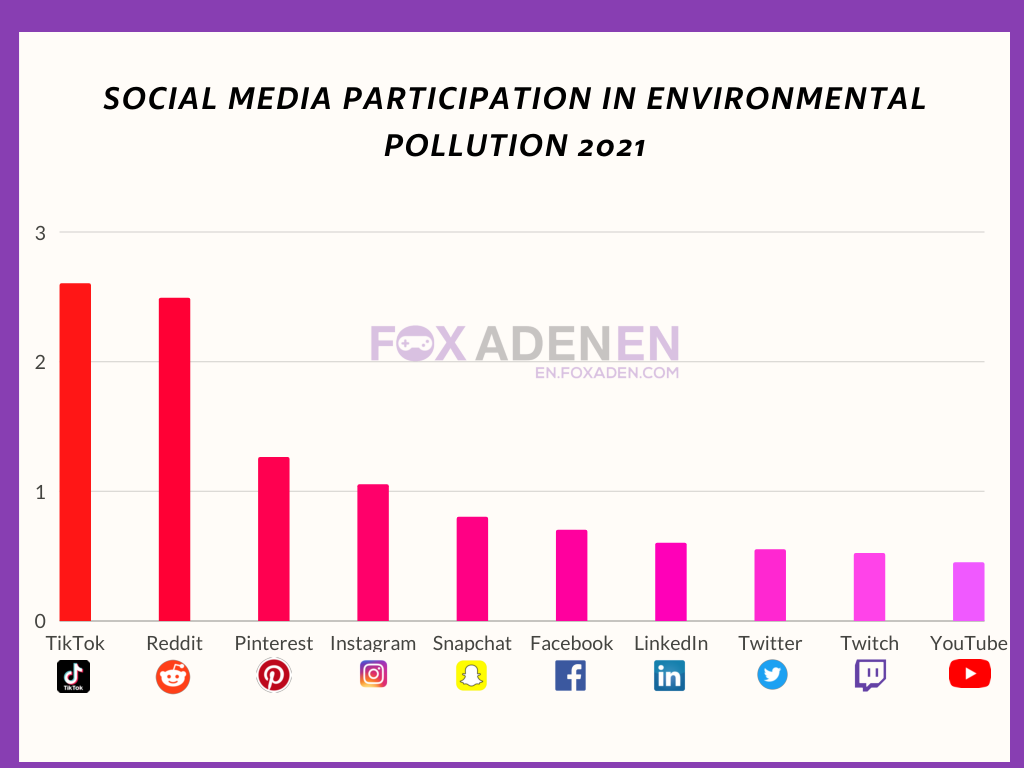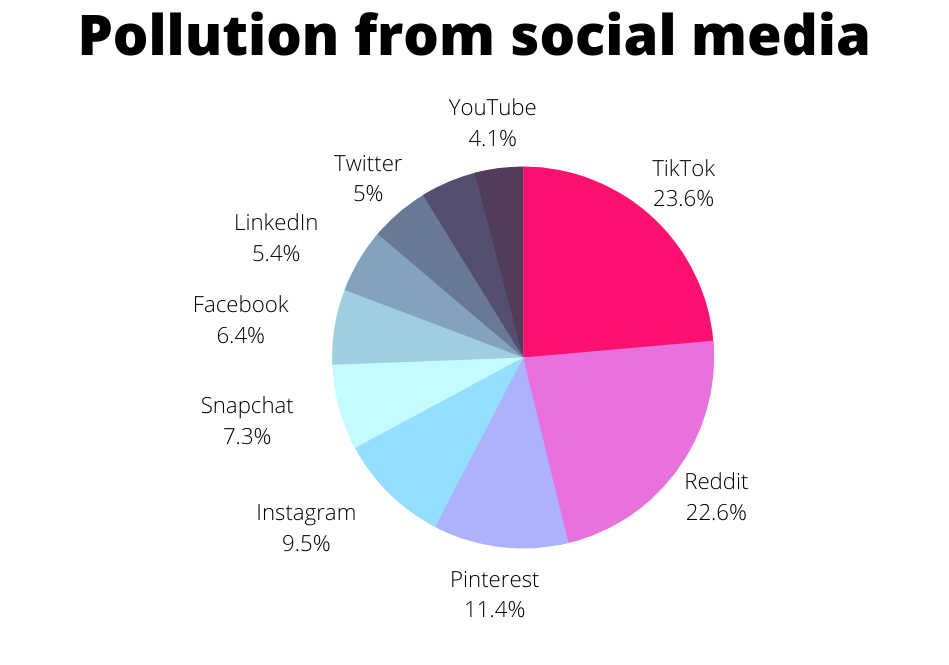Social media destroys the environment with carbon dioxide

The effect of social media destroys the environment with carbon dioxide. The internet and social media are often seen as green and low in pollution, but the truth is quite the opposite. The truth is that everything leaves a carbon footprint. but some pages or platforms pollute more in order to keep them running, as evidenced by some studies on the topic.
Greenpeace has been assessing major internet companies’ energy transparency policy. commitment to renewable energy, energy mitigation, and political impact since 2009. According to this organization’s data, due to residents staying at home in 2020, pollution by content flow increased by 87% in Mexico.
The graph at the top shows the high and low ratio. TikTok production is 2.63 grams per minute, the second Reddit is 2.45 grams per minute, and the lowest platform is YouTube 0.46 grams of carbon dioxide production in 60 seconds.
Your carbon footprint would be different if you spent all your time on Tik Tok. the fastest growing social network. 145 minutes on the podium per day for a year will produce more than 140 kilograms of carbon emissions. which is equivalent to driving a normal car for more than 563 kilometers.
What is the impact of the use of the most popular social networking sites on the environment?
According to Greenpeace, TikTok, Reddit and Pinterest are the most CO2 productive social networks. YouTube, Twitch, and Twitter are the least polluting social media platforms. However, each human produces 60 kilograms of carbon dioxide per year on average.

According to National Geographic, 38 million WhatsApp messages are sent every minute around the world. 266,000 hours of Netflix are watched, 4.3 million videos are watched on YouTube. and 3.7 million searches are made on Google, indicating the ecological footprint of digital traffic is approaching. Already from the aviation industry.
How a site or application can enter into the destruction of the environment:
Of course, if the site or application gets very large visits and exchange of information between users. For example, a single Google search emits 0.2 grams of carbon into the atmosphere. Meaning less than a quarter of a gram produces carbon dioxide in research.
Meaning that every viewer, visitor or send a message needs a server. This server needs power, and the server also needs cooling because of the huge amount of information exchange and the high temperature in it. Here everything needs energy and it comes mostly from oil materials that are not environmentally friendly.
Carbon is naturally produced from energy consumption. and this energy is often not environmentally friendly, as it consumes oil to power the energy. In order for the servers of large companies such as Tik Tok, Word, Facebook and others to work, which are among the largest consumers of energy, they need a lot of it and continuity in feeding it. This causes carbon release in nature.









